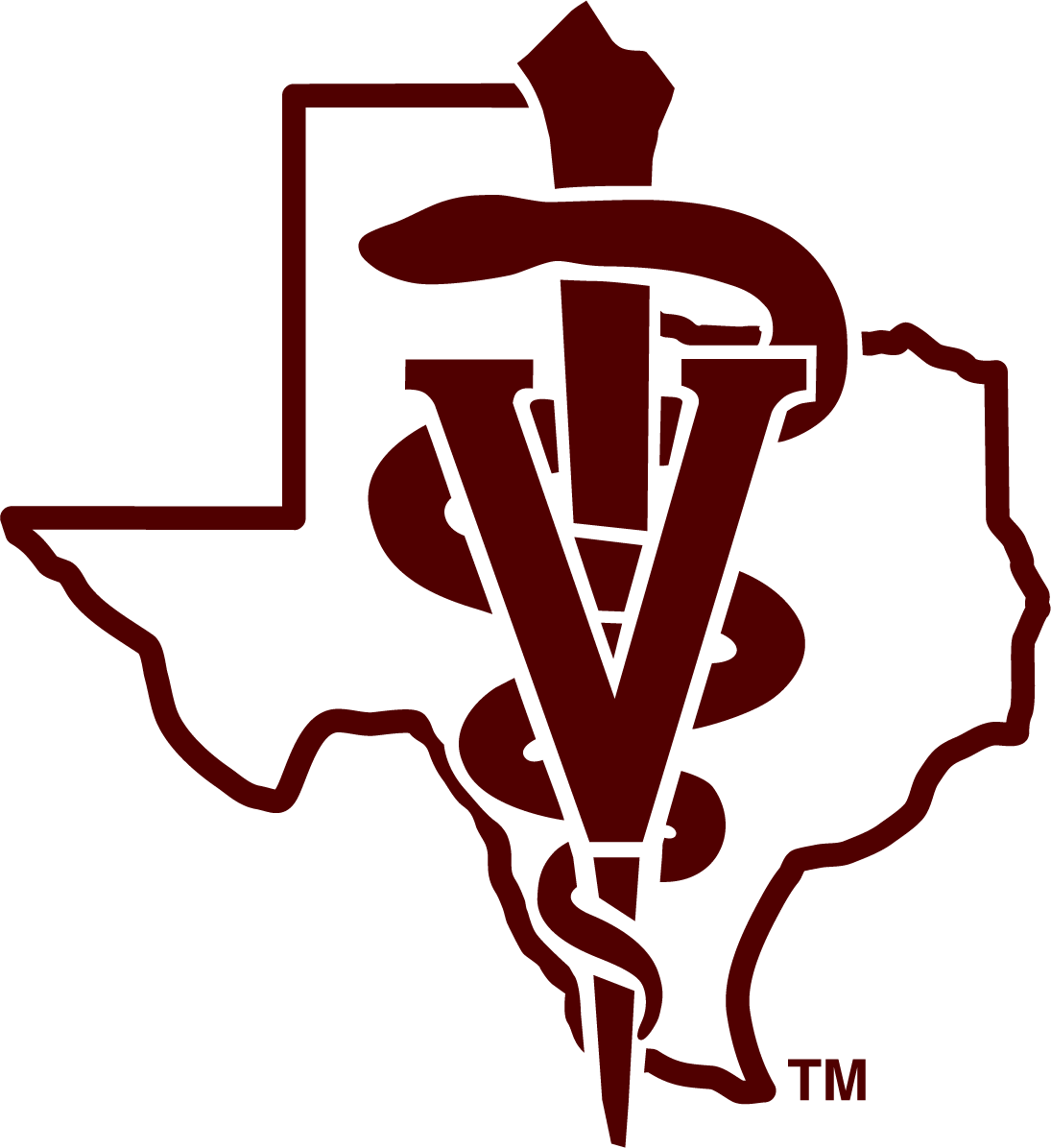
Howdy, Future Veterinarians!
Ranked No. 5 in the US*, the Texas A&M DVM Professional Program advances the future of veterinary medicine while caring for all animals, large and small, plus the people in their lives and the environments they live in. Our veterinary students benefit from one of the lowest debt-to-income ratios in the country upon graduation, as well as learning at the only veterinary medical teaching hospital in Texas.
*2025 U.S. News & World Report education rankings
& 2025 Quacquarelli Symonds (QS) World University Rankings by Subject
Home of the Aggie Veterinarian
For more than 100 years, Texas A&M Veterinary Medicine & Biomedical Sciences (VMBS) has been improving animal, human, and environmental health through teaching, research, veterinary care, service, and outreach.
We are ranked #1 in the Southeastern Conference (SEC), #4 in the United States, and #7 worldwide in veterinary science, according to the 2024 Quacquarelli Symonds (QS) World University Rankings by Subject.
We are one of the largest colleges of veterinary medicine in the U.S., currently training over 700 DVM students each year, with an annual entering class of 180 students. As of May 2023, the VMBS has graduated 8,917 veterinarians.
With world-class clinicians and educators, a modern veterinary curriculum, new and improved facilities, and the support of the Aggie Network, our veterinary students graduate ready to improve the future for animals and the people who love them. When it comes to veterinary excellence, you can’t beat an Aggie veterinarian!
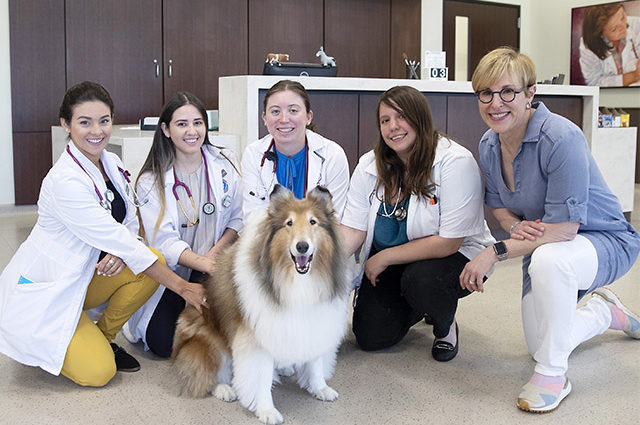
Traditions & Celebrations
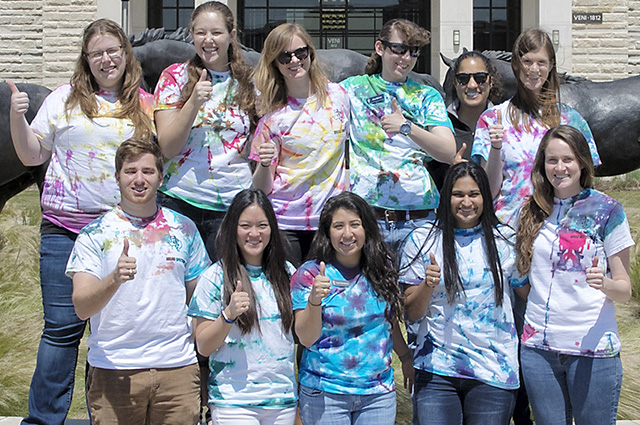
Student Organizations
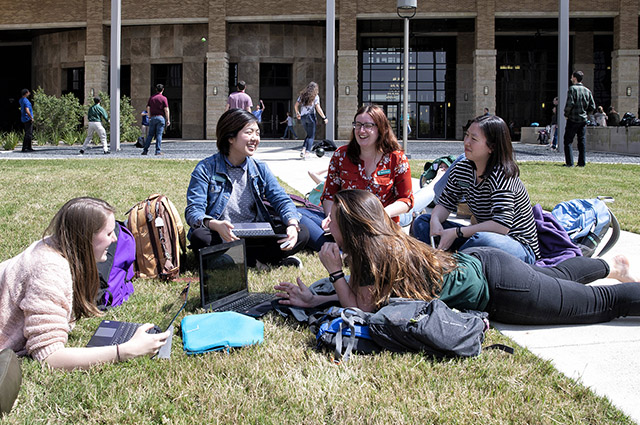
Resources & Wellness
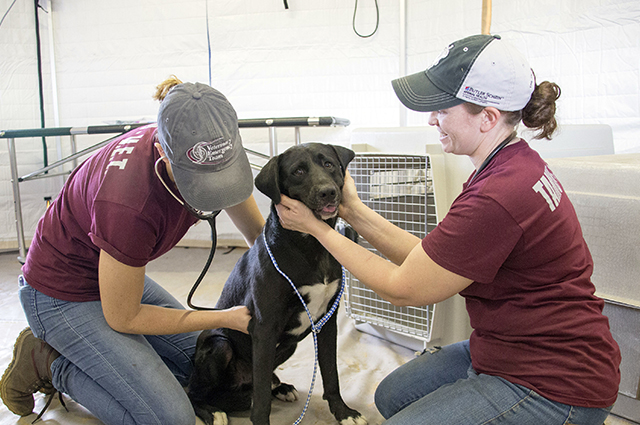
Veterinary Curriculum
Traditions & Celebrations
As part of Texas A&M University, the School of Veterinary Medicine & Biomedical Sciences (VMBS) celebrates many traditions designed to unite students, remember fallen Aggies, and demonstrate our core values of Respect, Excellence, Leadership, Loyalty, Integrity, and Selfless Service.
The Aggie Ring
All Texas A&M students, whether undergraduate, graduate, or professional, are members of the Aggie Network and are, therefore, eligible for an Aggie Ring after completing various requirements. The Aggie Ring is easily recognizable and has connected Aggies worldwide. VMBS veterinary students who did not attend Texas A&M for an undergraduate or graduate degree are eligible to apply for their Aggie Ring after earning 45 credit hours at Texas A&M, which falls during their second year of veterinary school.
Reveille
Texas A&M’s mascot is a female collie named Reveille, often known as the First Lady of Aggieland and the highest-ranking member of the Corps of Cadets. The first Reveille was found by students and brought to campus in 1931, and she has been a beloved aspect of Texas A&M culture ever since. Upon retirement, both Reveille VIII and IX joined the Texas A&M Stevenson Companion Animal Life-Care Center to be cared for by VMBS faculty, staff, and students.
Muster
On April 21 each year, current and former students gather at Reed Arena to honor and celebrate the lives of all Aggies who passed away the previous year during Muster. When a fallen Aggie’s name is called, their family and friends in attendance answer, “Here.” Additional Muster ceremonies also take place around the world on the same date.
Learn about more Texas A&M traditions.
We have many of our own unique traditions and celebrations at the VMBS.
White Coat Ceremony
In the spring of a veterinary student’s third year, they will receive an official Texas A&M white lab coat to mark their transition from classroom study to clinical work. Each student is invited on stage during this ceremony and presented with a coat by their faculty mentor.
Student-Organized Events
Veterinary students organize and participate in many activities and events throughout the year, including Texas A&M’s Disaster Day —the nation’s largest student-led interprofessional emergency response simulation — and a night of fun and dancing at the annual Fur Ball.
School-Wide Events
The VMBS also hosts many school-wide events, such as the Dog Bowl Tailgate in the fall and the VMBS Picnic in the spring.
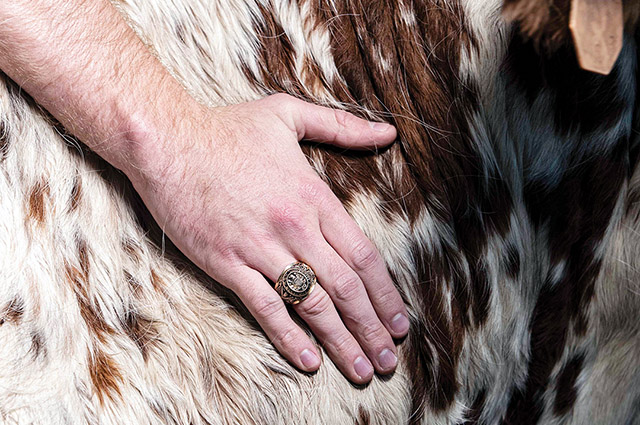

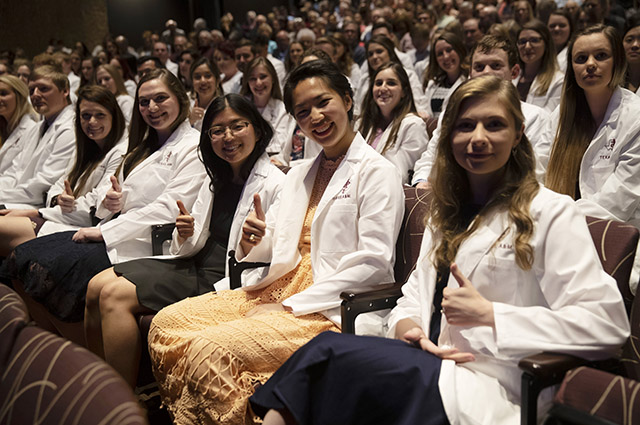
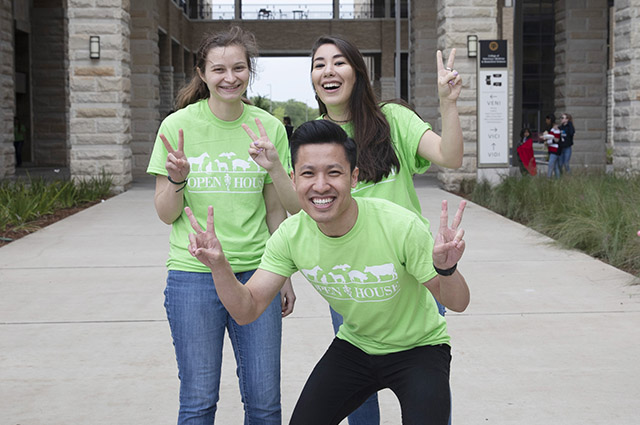
Student Organizations
The VMBS has more than 20 official student organizations that unite students based on career goals, interests, or background.
SAVMA
Our Students of the American Veterinary Medical Association (SAVMA) chapter works to support, empower, and inspire all veterinary students in improving their lives, education, and career, along with securing a better future for the profession.
Many veterinary specialties have their own clubs under SAVMA, including animal behavior, equine medicine, internal medicine, pain management, surgery, and zoo, exotics, and wildlife medicine. Other SAVMA clubs cover areas of the veterinary profession and industry, such as business, conservation, and women’s leadership. See a list of all SAVMA clubs on our website.
Service
Many student organizations, such as Aggies Fostering Hope and the Veterinary Response Team, also provide valuable community service opportunities. Others, such as VOICE and Pride VMC, work to enhance the school’s climate and culture initiatives.
School Representatives
Finally, veterinary students may also represent the school through the VMBS Ambassadors and White Coats organizations. Ambassadors serve as the public face of our school by welcoming guests to campus, sharing information with visitors, assisting with special functions, and offering daily tours of our facilities.
Similarly, but with a more internal focus, White Coats work with the DVM Professional Program to represent and promote the VMBS during admissions interviews, orientation, the White Coat Ceremony, graduation, alumni events, and community outreach.
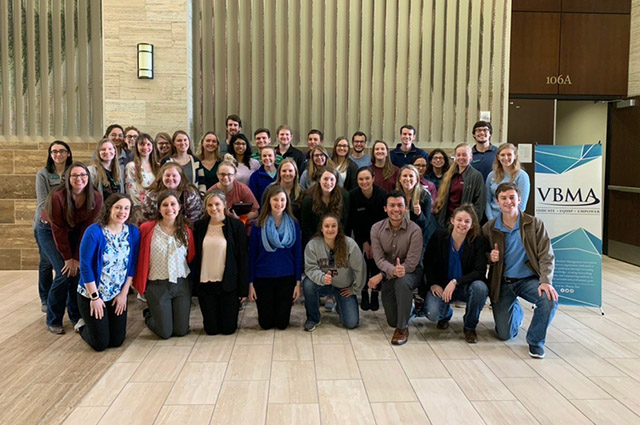

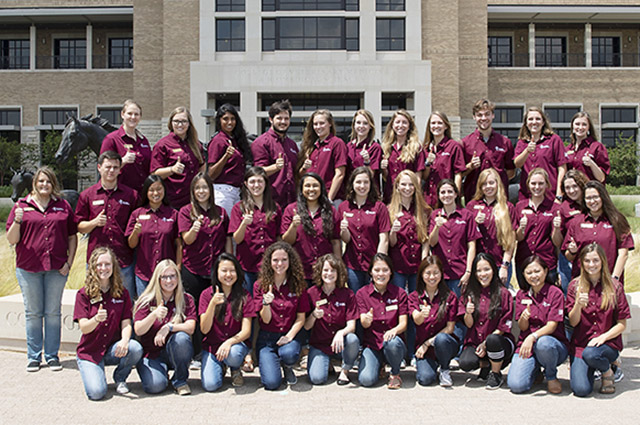
Resources & Wellness
VBEC
The Veterinary & Biomedical Education Complex (VBEC), which opened in 2016, is a set of three buildings — VENI, VIDI, and VICI — that are designed to provide VMBS students with a world-class veterinary education experience. There are more than 330,000 square feet of classrooms, laboratories, and other learning spaces, plus a large courtyard for outdoor studying — or a fun game of Frisbee between classes.
The VBEC also contains indoor spaces for both group and quiet study, the Vet Med Café and dining area, a Wellness Room for a quick workout between classes, and more.
Wellbeing Services
Also available in the VBEC is the University Health Services (UHS) Counseling at the VMBS office, which offers a relaxation room for veterinary students and personal, academic, and couples counseling.
Employment/Recruitment Opportunities
The VMBS offers several resources to help veterinary students find jobs and externships. We direct veterinary employers from across the country to post open positions on both the HireAggies and the Veterinary Career Network job search platforms. We also host the annual Veterinary Job & Externship Fair to connect employers and students. Veterinary practices from Texas and beyond attend the fair, hoping to recruit future Aggie veterinarians to join their teams.
VMTH & VERO
Finally, when it comes to clinical learning during the fourth year of veterinary school, students rotate through different services at the world-class Texas A&M Veterinary Medical Teaching Hospital (VMTH) while also having the opportunity to complete externships at animal shelters, private practices, and other institutions, including Texas A&M’s Veterinary Education, Research, & Outreach (VERO) program in Canyon, TX.
VET
Fourth-year veterinary students on the community connections rotation may also have the hands-on learning opportunity to assist the Veterinary Emergency Team (VET) in responding to disaster situations across the state.

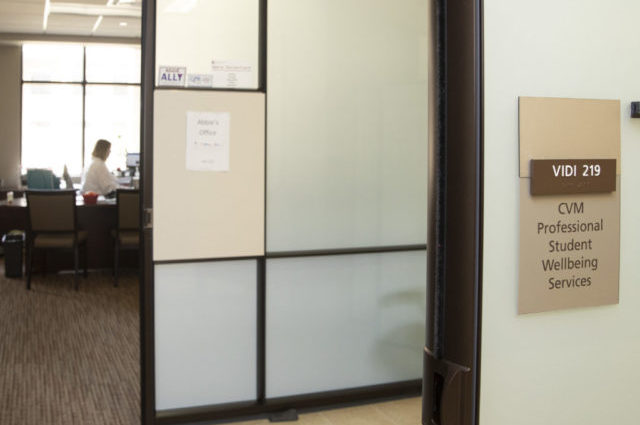
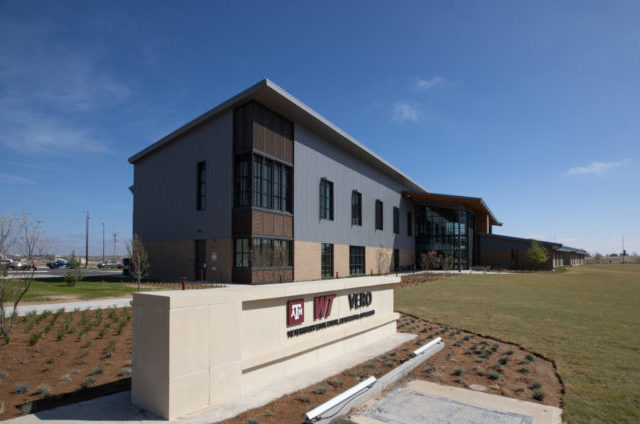
Veterinary Curriculum
The veterinary curriculum is a four-year program with three years of classroom and laboratory instruction and a final year of clinical rotations, mostly in the VMTH. It’s designed to give future veterinarians a solid foundation in disease recognition and clinical competency.
During the program’s first three years, basic science courses are instructed alongside courses that focus on the professional skills necessary for success as a veterinarian. Learning experiences include didactic lectures, small group discussions, simulation exercises, clinical skills instruction, as well as critical thinking, problem-solving, and communication training.
Students have the opportunity to direct learning toward their career goals by choosing one of five tracks:
-
- companion animal,
- rural/mixed animal,
- equine,
- food animal, and
- alternative.
In the fourth year, students spend 12 months on clinical rotations in the VMTH, at VERO, with the VET, the Houston SPCA, the Texas Department of Criminal Justice, and on externship experiences at locations of the student’s choice.
The 2+2 DVM Program provides an opportunity to join a small cohort of students who take their first two years at VERO in Canyon, with convenient exposure to livestock and rural veterinary medicine. They take their last two years in College Station with the rest of their class. Indicating a preference for this option is part of the application process.
Two programs at Texas A&M University offer the opportunity to earn a DVM plus another graduate degree. Learn more about the DVM/MS in Veterinary Public Health & Epidemiology (VPHE) and the DVM/MBA combination degree programs.
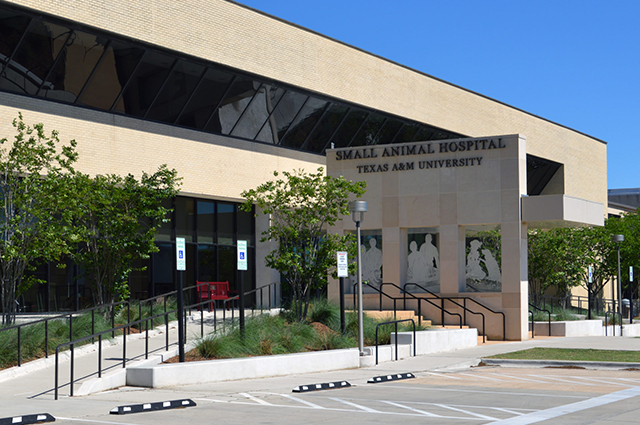

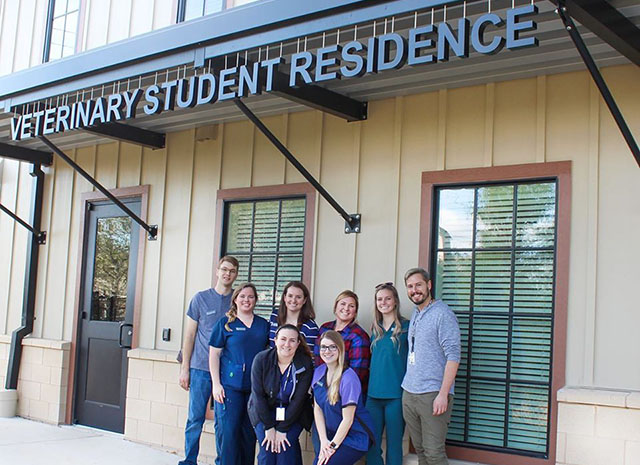
Explore the School
You may have heard that the Aggie family is special — and the smaller VMBS family is, too! Connect with us to see what sets our school apart from any other school or college of veterinary medicine in North America.
Make Plans to Visit Us
We know that nothing beats touring a place in person! Learn more about your options to visit the VMBS while in Aggieland.
Can’t visit us in person? Check out our Virtual Tours!
Discover the Veterinary & Biomedical Education Complex (VBEC), or our Research & Graduate Studies (R&GS) programs. Video tours for the Large Animal Teaching Hospital (LATH) and Small Animal Teaching Hospital (SATH) are coming soon.
Interested in Veterinary Medicine —
but not ready to apply?
The selection process for admissions to the Texas A&M DVM Professional Program is rigorous — and preparing early is important. We have information for grade-schoolers, high school juniors, and college undergraduate juniors to help you get and stay on track!
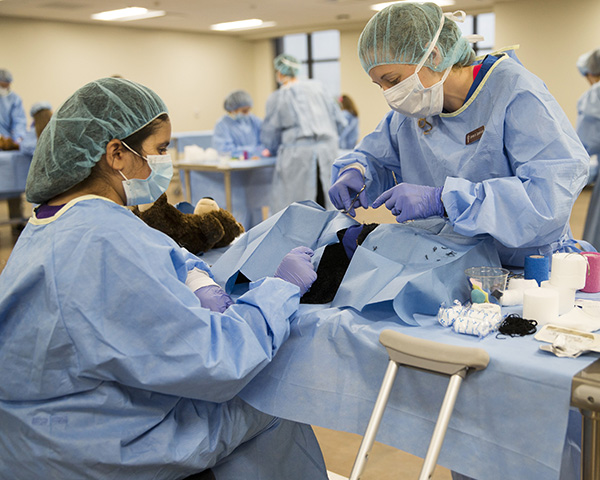
Opportunities for Veterinary Students
What Our Veterinary Classes Look Like
28 Male
144 Female
95.3%
TX Residents
23.5
Average Age
Overall GPA
3.83
Last 45 GPA
3.85
Science GPA
3.77
33 Male
147 Female
91.7%
TX Residents
23
Average Age
Overall GPA
3.78
Last 45 GPA
3.82
Science GPA
3.74
30 Male
150 Female
93.3%
TX Residents
23.27
Average Age
Overall GPA
3.78
Last 45 GPA
3.83
Science GPA
3.74
38 Male
142 Female
93.3%
TX Residents
23
Average Age
Overall GPA
3.80
Last 45 GPA
3.85
Science GPA
3.77
Apply to the DVM Program
Getting Into Veterinary School — What It Takes
A = I (M²)
Achievement = Intelligence x Motivation²
- Complete prerequisite courses.
- Meet minimum GPA requirements.
- Complete of a minimum of 100 hours working with a veterinarian.
- Document accrued animal experience hours (number of hours, which species, and a brief description of the activity)
- Develop a resume.
- Explore opportunities in veterinary medicine
Visit DVM Admissions for more information, and check out our Frequently Asked Questions About Admissions.
Entrance Requirements
Minimal acceptable GPA:
- 2.90 on a 4.0 scale,
- 3.10 for the last 45 semester credits,
- AND 2.90 in science courses
Acuity Insights Assessments: Casper Test
60-90 minute online situational judgment test (SJT)
Visit DVM Eligibility Requirements for more information.
The Application Process
If you’re ready to apply for admission to the Texas A&M VMBS DVM Professional Program, please review the eligibility requirements, familiarize yourself with the selection process, and check that you’ve completed the necessary prerequisites. (Also, be sure to review any prerequisite updates.)
All applicants must apply online through the Texas Medical & Dental Schools Application Service (TMDSAS).
-
- Submit TMDSAS application, fee, and applicant evaluation forms by the deadline via tmdsas.com.
- Submit supplemental application and fee by the deadline.
- Complete the Casper Assessment from Acuity Instights by the deadline via acuityinsights.app/casper.
- Submit official Fall transcripts when requested by TMDSAS.
Learn more about application deadlines and other important dates related to applying to the Texas A&M DVM Professional Program.
Multiple Mini Interviews (MMIs)
-
Each scenario response is typically about six minutes.
-
Applicants respond to a series of six scenarios.
-
Responses are recorded and reviewed asynchronously.
-
There are two independent reviewers per scenario.
-
Reviewers will look for communication skills, leadership skills, critical thinking, problem-solving, empathy, and ethics.
Application Timeline
May 1
Aug. 30
November
Dec. 17
Jan. 2
submission deadline
Mid-February
March
April 15
May 30
Visit DVM Application Deadlines for more information.
An Investment in Your Future
In fiscal year 2023:
- Our DVM program had the eighth lowest tuition and fees of any veterinary college in the US.
- Texas A&M veterinary graduates had the third lowest debt load in the country.
- 80% of our veterinary students received scholarships to offset the cost of attendance (COA).
- Members of the DVM Class of 2023 averaged three job offers per graduate, with 100% of employment-seeking degree candidates employed by graduation.
Learn more about DVM Professional Program Financial Aid & Scholarships.

What Our Students Say
“The prestige and reputation of being an Aggie Veterinarian was evident when talking to professors and veterinarians. While visiting the university myself, the ambassadors were very welcoming and helpful. By the time my visit had ended, I knew this was where I wanted to be.”
“One of my favorite parts of fourth year is getting to speak with clients and letting them know I’m taking care of their pets to the best of my ability and treating them with love, like how I would want my own pets treated.”
“It’s one thing to be a veterinarian, but it’s even more special to be an Aggie veterinarian and to share the experience with my family.”
“You should absolutely be proud of and emphasize anything that you have that gives you a unique story and is a different path than other people followed to get here. That’s what makes you able to bring your own unique skills and your own unique background to veterinary medicine, which is awesome.”
“Even from my limited experience in research, I’ve witnessed some incredible breakthroughs in cancer research, which is really exciting. However, there are still so many more questions we can answer…as a lab animal veterinarian, my hope is that I can serve as a conduit for the field of cancer research.”
“As a poultry veterinarian, if a [production] plant says, ‘We’re noticing this problem; what’s going on?’ I might end up tracing that all the way back to the feed mill…I like that poultry vets get to have their toe in every single area of production and get to investigate what’s happening.”
“I always wanted to help animals since I was 12 years old. I figured that if I was going to do anything for the rest of my life and call it work, it would need to involve animals because I wouldn’t enjoy anything else.”
“People here have amazing and diverse talents.…I think it’s so inspiring to be able to share space with people like that and to hopefully contribute some interesting things of my own to our diverse field.”
School Departments, Centers & Initiatives
Join us on social media!
#TAMU #VMBS
Contact Information
Recruitment & Admissions | DVM Professional Program | Office of the Dean
Texas A&M Veterinary Medicine & Biomedical Sciences
4461 TAMU | College Station, TX 77843-4461
Tel: 979.862.1169 | Email: admiss-dvm@tamu.edu
Web: vetmed.tamu.edu/dvm/admissions
